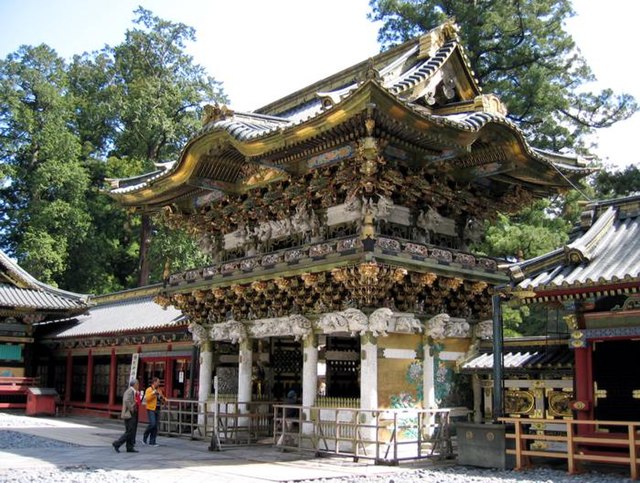Top Qs
Timeline
Chat
Perspective
Tōshō-gū
Shinto shrine dedicated to Tokugawa Ieyasu From Wikipedia, the free encyclopedia
Remove ads
A Tōshō-gū (東照宮) is a Shinto shrine in which Tokugawa Ieyasu (1543–1616), the founder of the Tokugawa shogunate, is enshrined.[1] Tōshō-gūs are found throughout Japan.

The most well-known Tōshō-gū is the Nikkō Tōshō-gū located in Nikkō, Tochigi Prefecture.[2] It is one of Japan's most popular destinations for tourists and is part of "Shrines and Temples of Nikkō" World Heritage Site.[3]
Ueno Tōshō-gū at Ueno Park in Tokyo is also widely known.[4][5] The Kunōzan Tōshō-gū is in Shizuoka Prefecture and rivals Nikkō's for decorative splendor.[6][7] Another one is the Nagoya Tōshō-gū, constructed in 1619. A Tōshō-gū can also be found at Miyanochō, in Sendai.
During the Edo period these shrines reached 500 in number, but after the Meiji Restoration many were abandoned,[8] and others united with shrines in the area. Presently, it is estimated that there are about 130 Tōshō-gū.[9] The National Tōshō-gū Association lists a total of 48 shrines.[10]
Ieyasu was deified with the name Tōshō Daigongen (東照大権現), meaning "Great Gongen, Light of the East"[11] (a gongen is a Buddha who has appeared on Earth in the form of a kami to save sentient beings), and this is what gives Tōshō-gū shrines their name.
Remove ads
Gallery of Tōshō-gū shrines
- Nikkō Tōshō-gū
Nikkō, Tochigi - Kunōzan Tōshō-gū
Shizuoka, Shizuoka - Ueno Tōshō-gū
Tokyo, Tokyo
- Sendai Tōshō-gū
Sendai, Miyagi - Nagasaki Tōshō-gū
Nagasaki, Nagasaki - Shiba Tōshō-gū
Tokyo, Tokyo - Reikyū Shrine
Shimabara, Nagasaki - Hōraisan Tōshō-gū
Shinshiro, Aichi
See also
References
External links
Wikiwand - on
Seamless Wikipedia browsing. On steroids.
Remove ads








